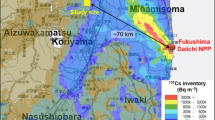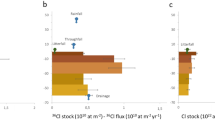Summary
The role of organic soil as a sink for radioactive contaminants in a High Arctic environment was studied. Samples were obtained from an area of organic soil located on the Arctic archipelago of Svalbard (79° N) and from a non-organic control site in the same region. Samples were differentiated into organic layers and the underlying material and measured for a suite of anthropogenic and natural radionuclides and for a variety of soil chemistry parameters. Results indicated that the organic components of the soil constitute a sink term for a number of radionuclides. Values for Pu isotopes, 137Cs and 238U were appreciably higher at the study site than at the control site, by up to a factor of 40 for Pu and 20 for 137Cs and 238U. The source of 238U to the site appeared to be enrichment of this isotope from surface or melt water via adsorption to to either iron hydroxides or organic matter although the situation pertaining to Pu and 137Cs remains less clear.
Similar content being viewed by others
Author information
Authors and Affiliations
Rights and permissions
About this article
Cite this article
Dowdall, M., Gwynn, J., Moran, C. et al. Organic soil as a radionuclide sink in a High Arctic environment. J Radioanal Nucl Chem 266, 217–223 (2005). https://doi.org/10.1007/s10967-005-0895-2
Issue Date:
DOI: https://doi.org/10.1007/s10967-005-0895-2




